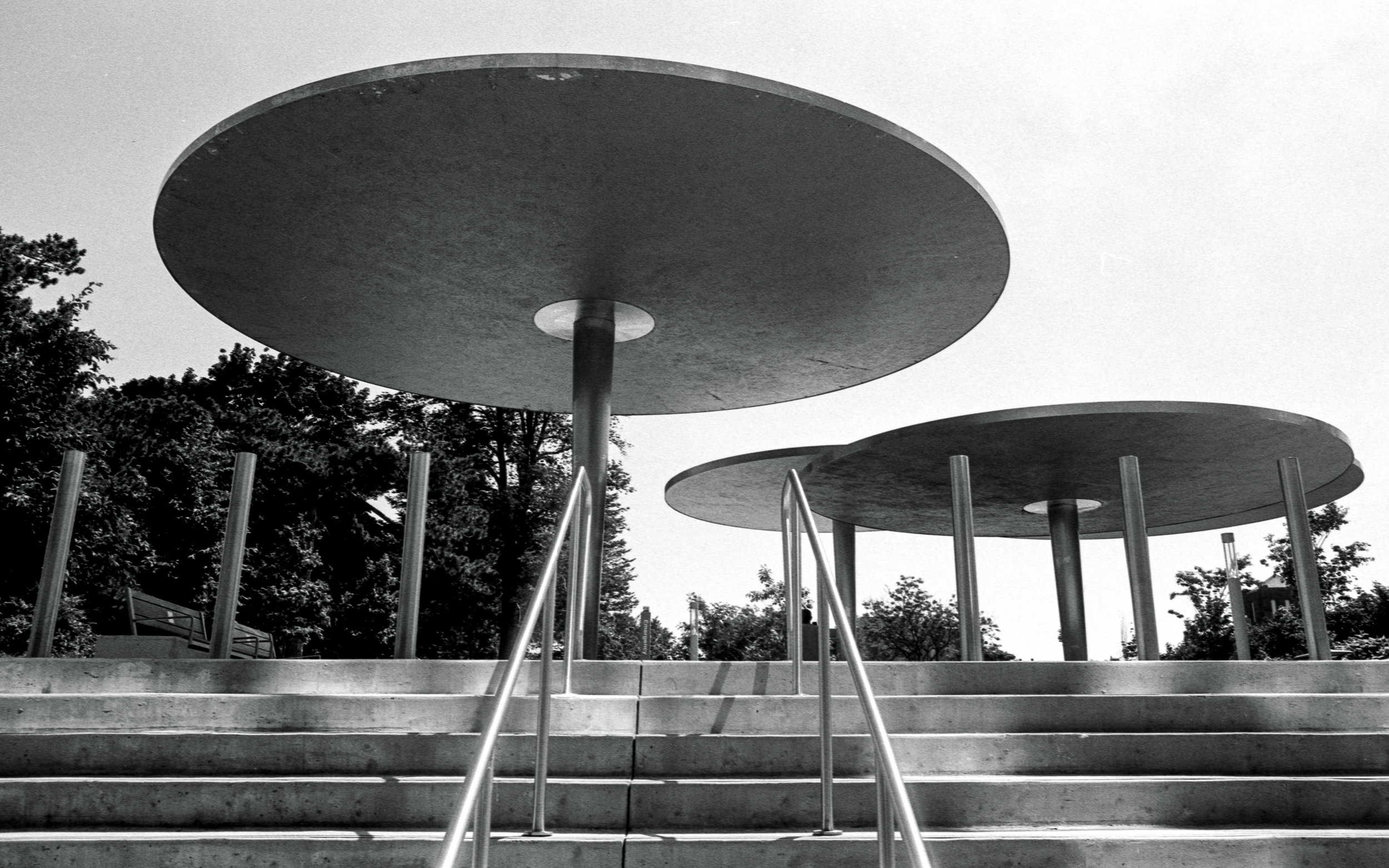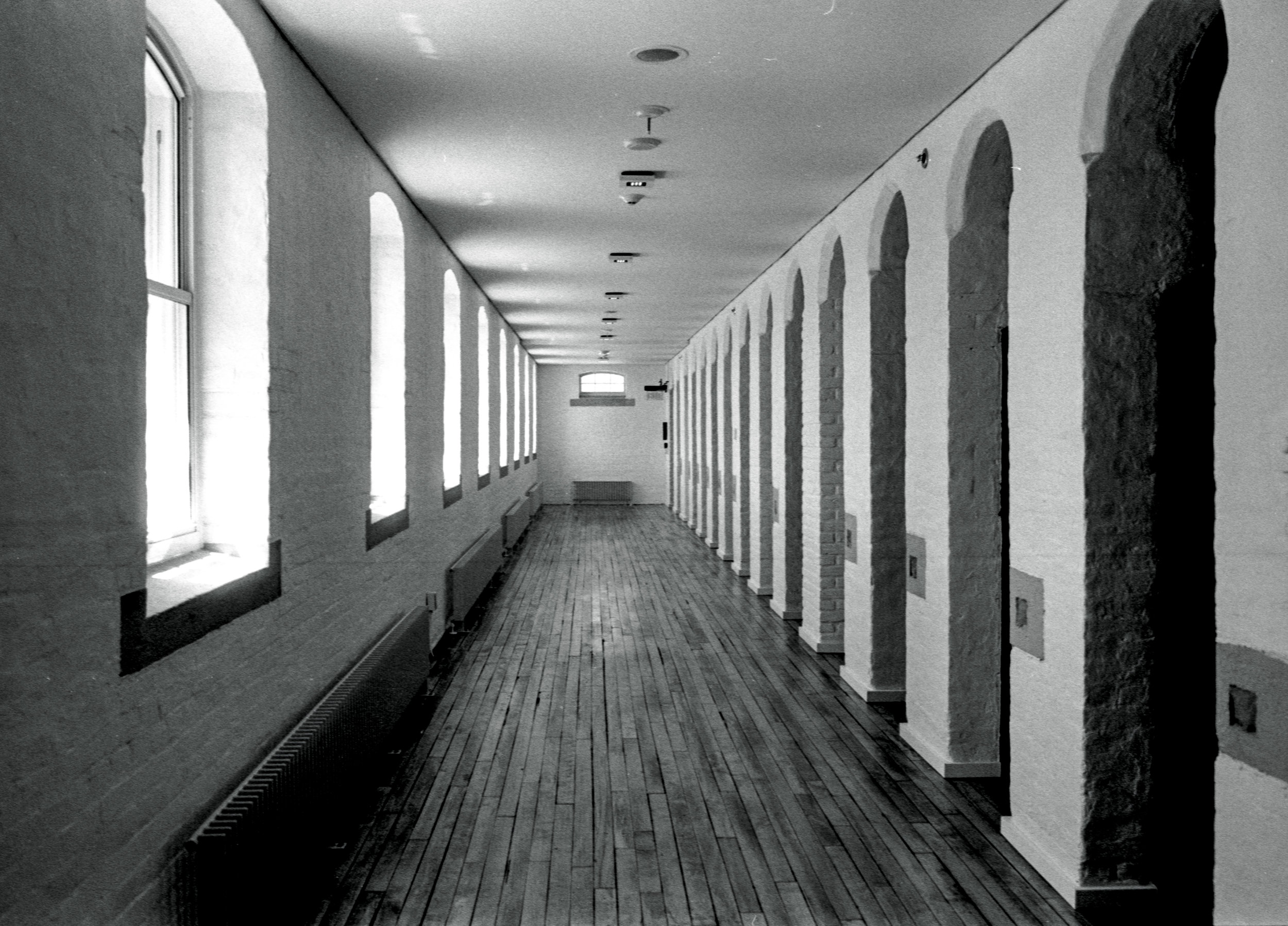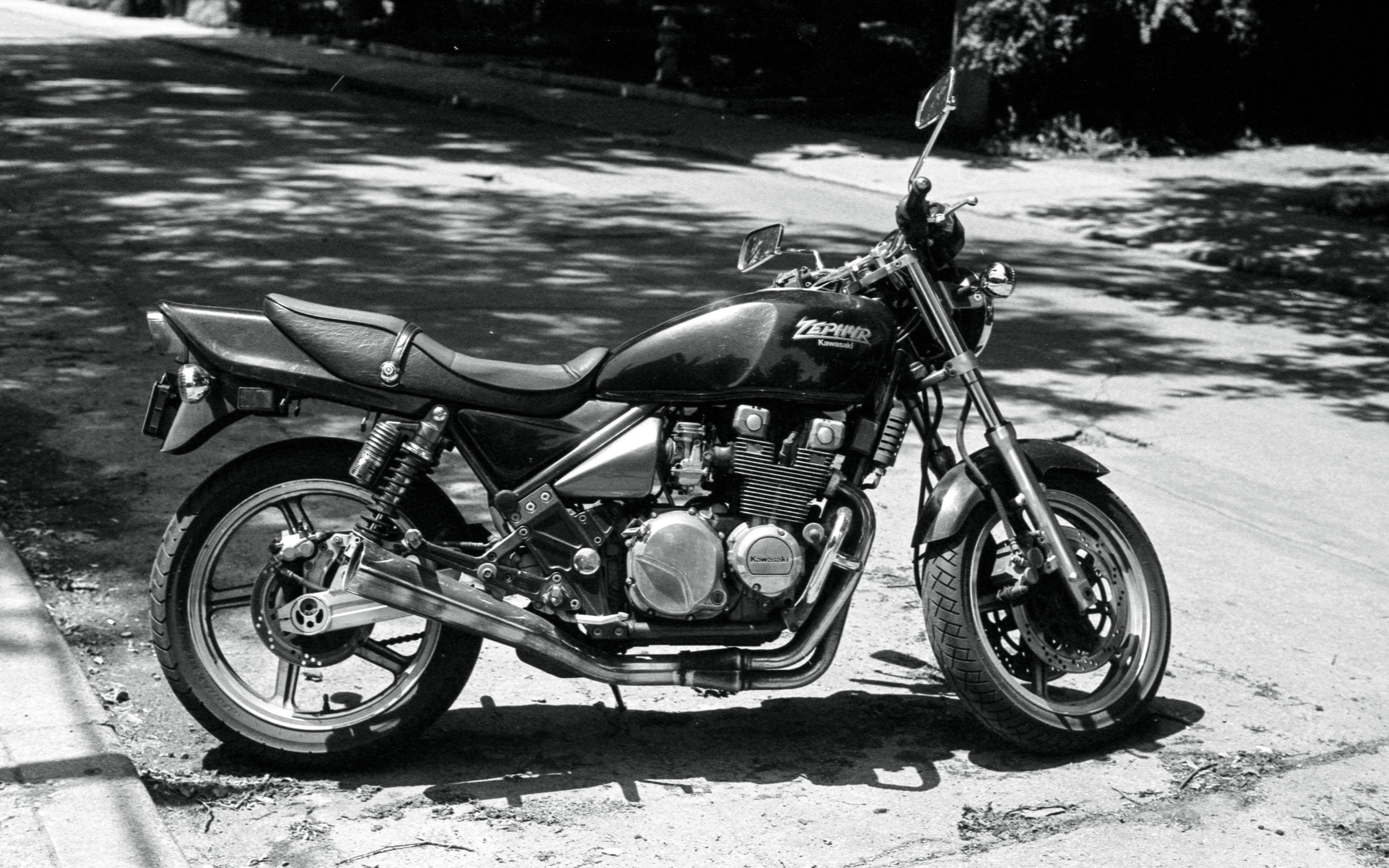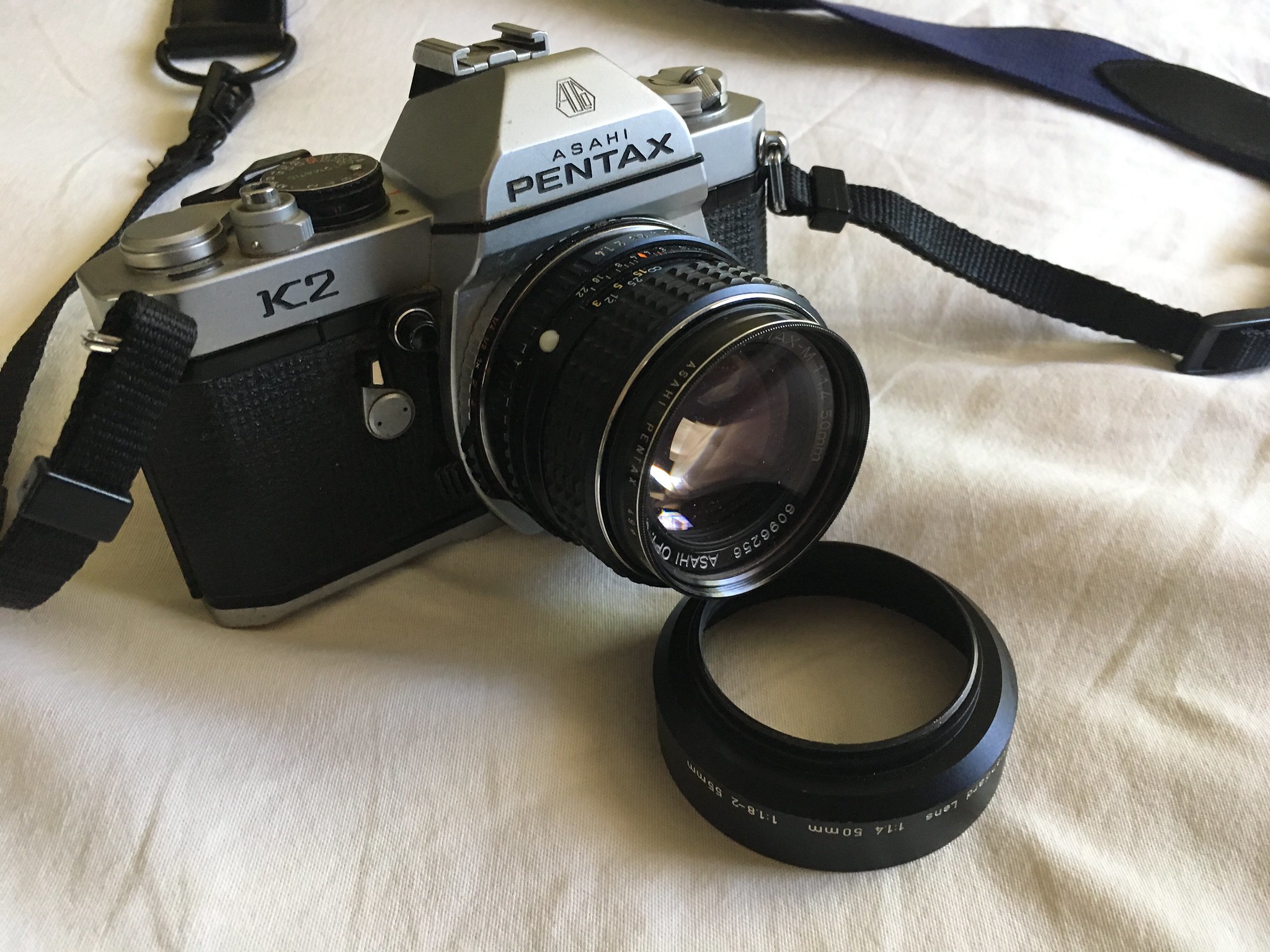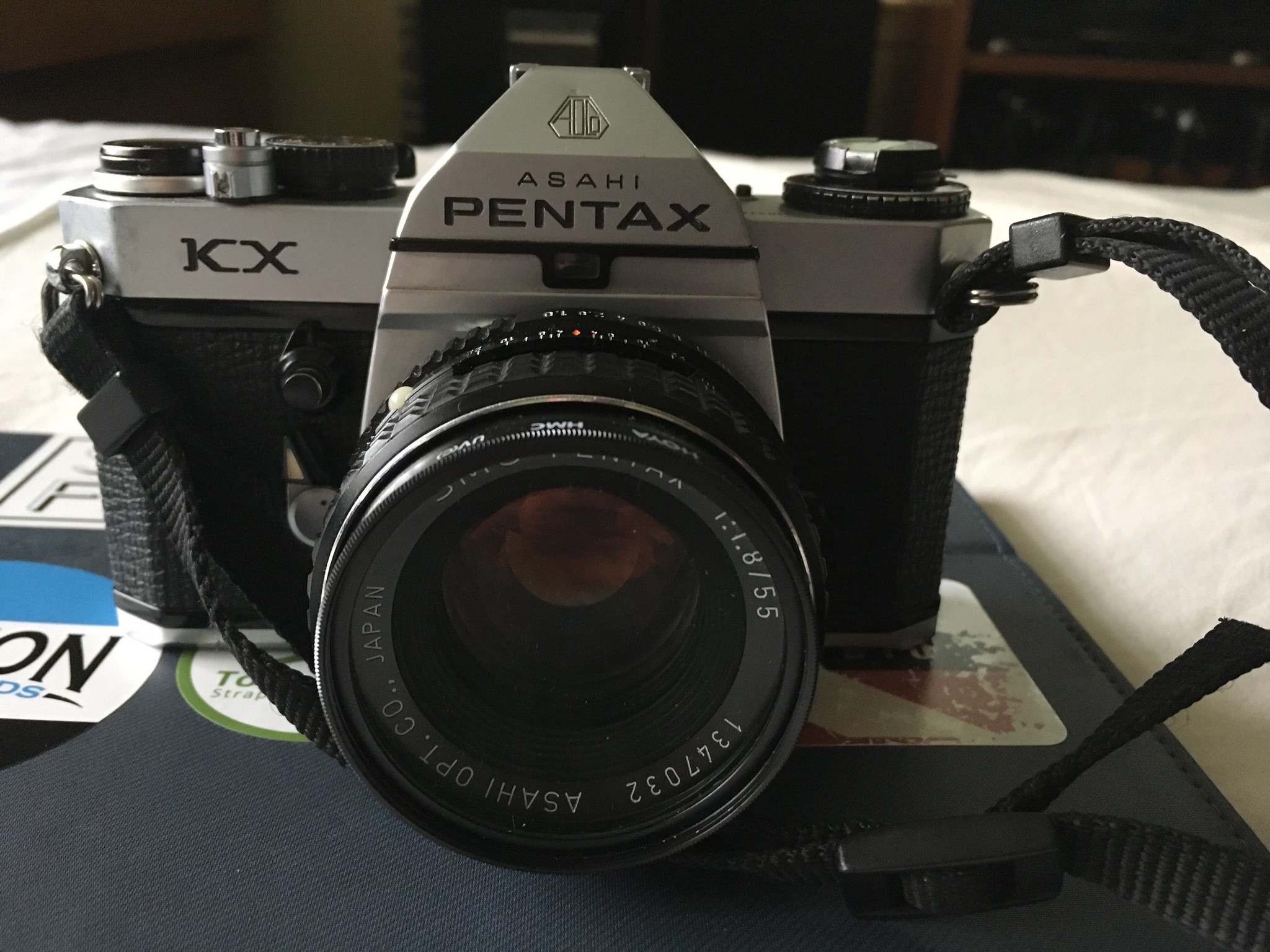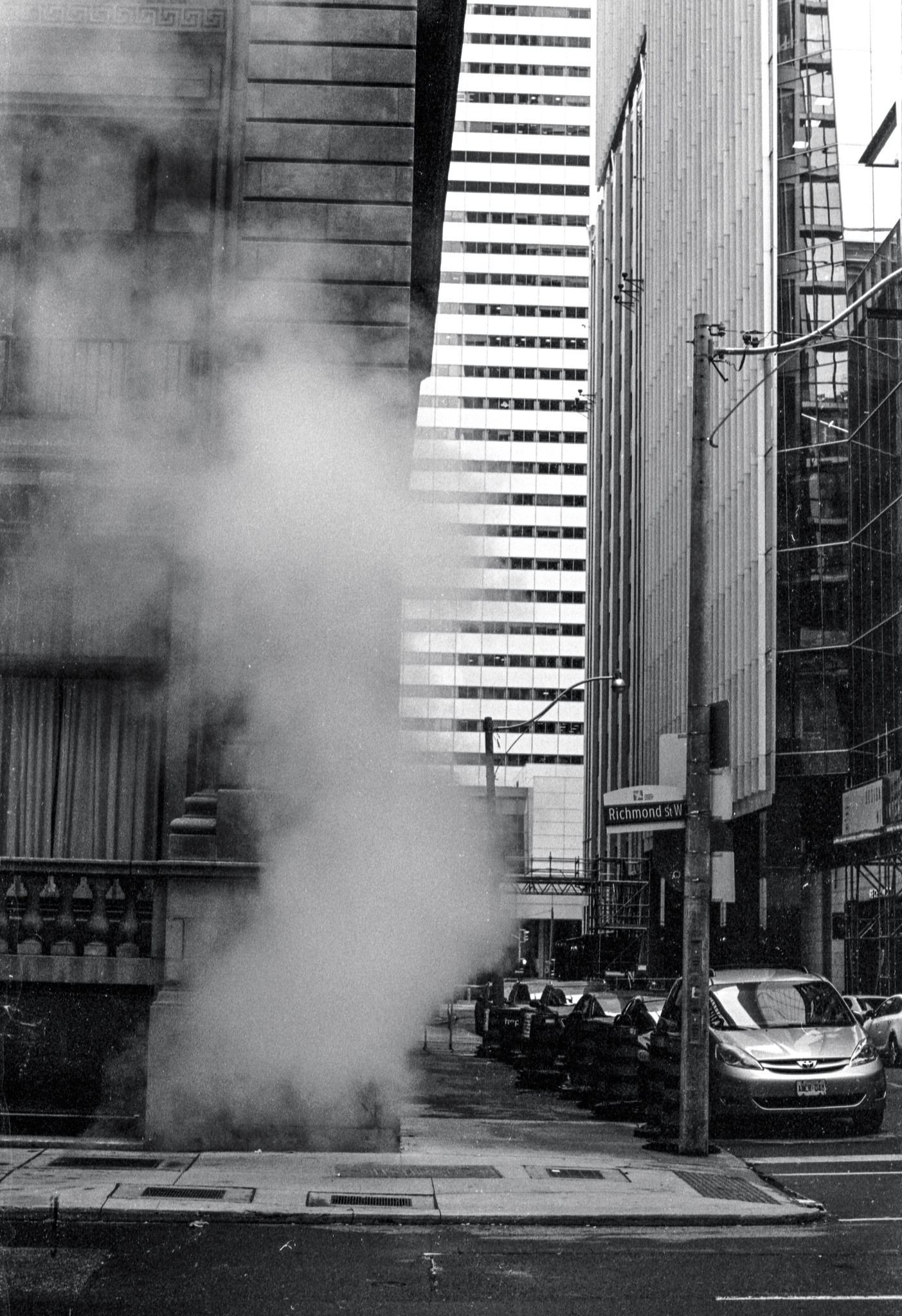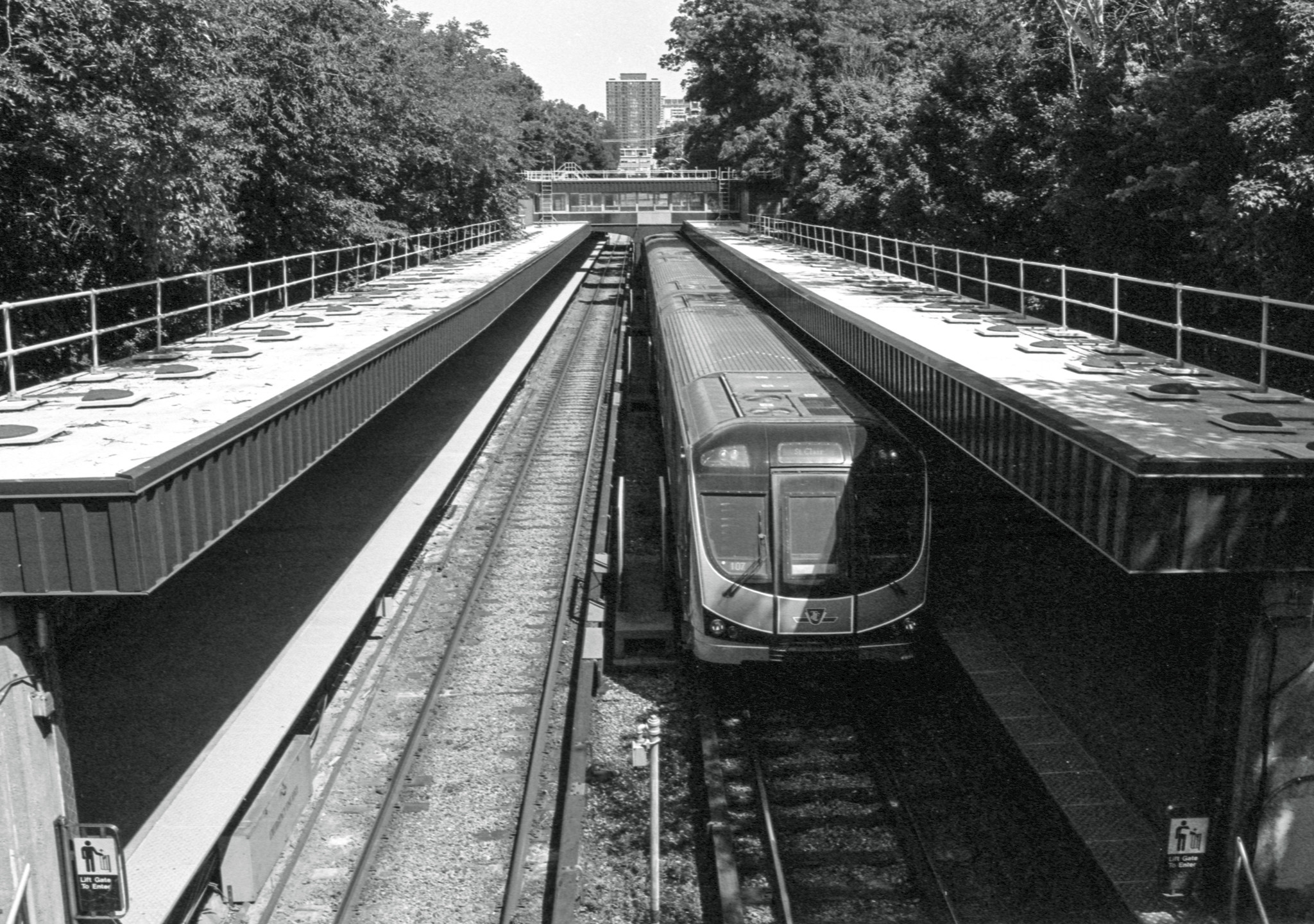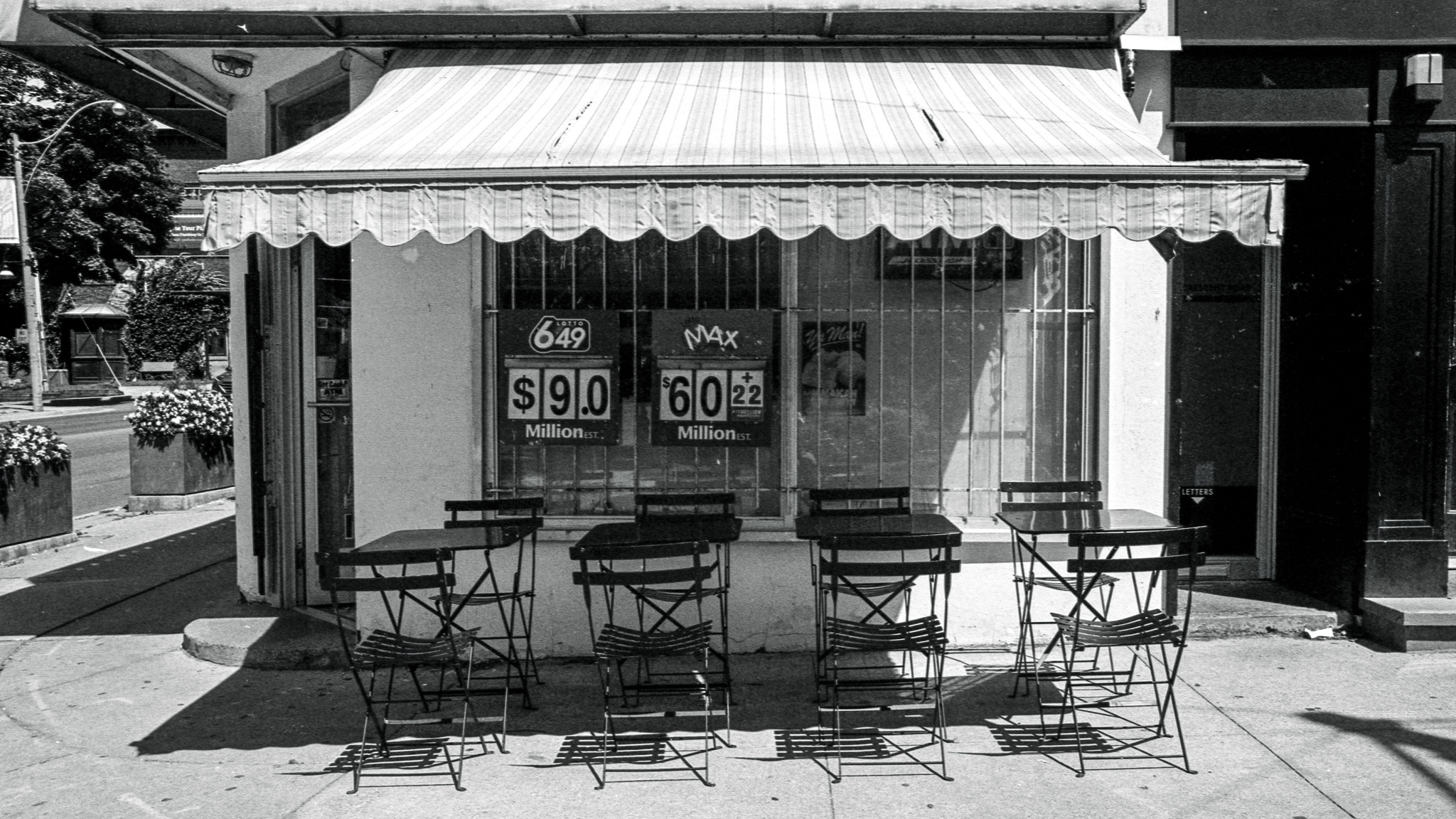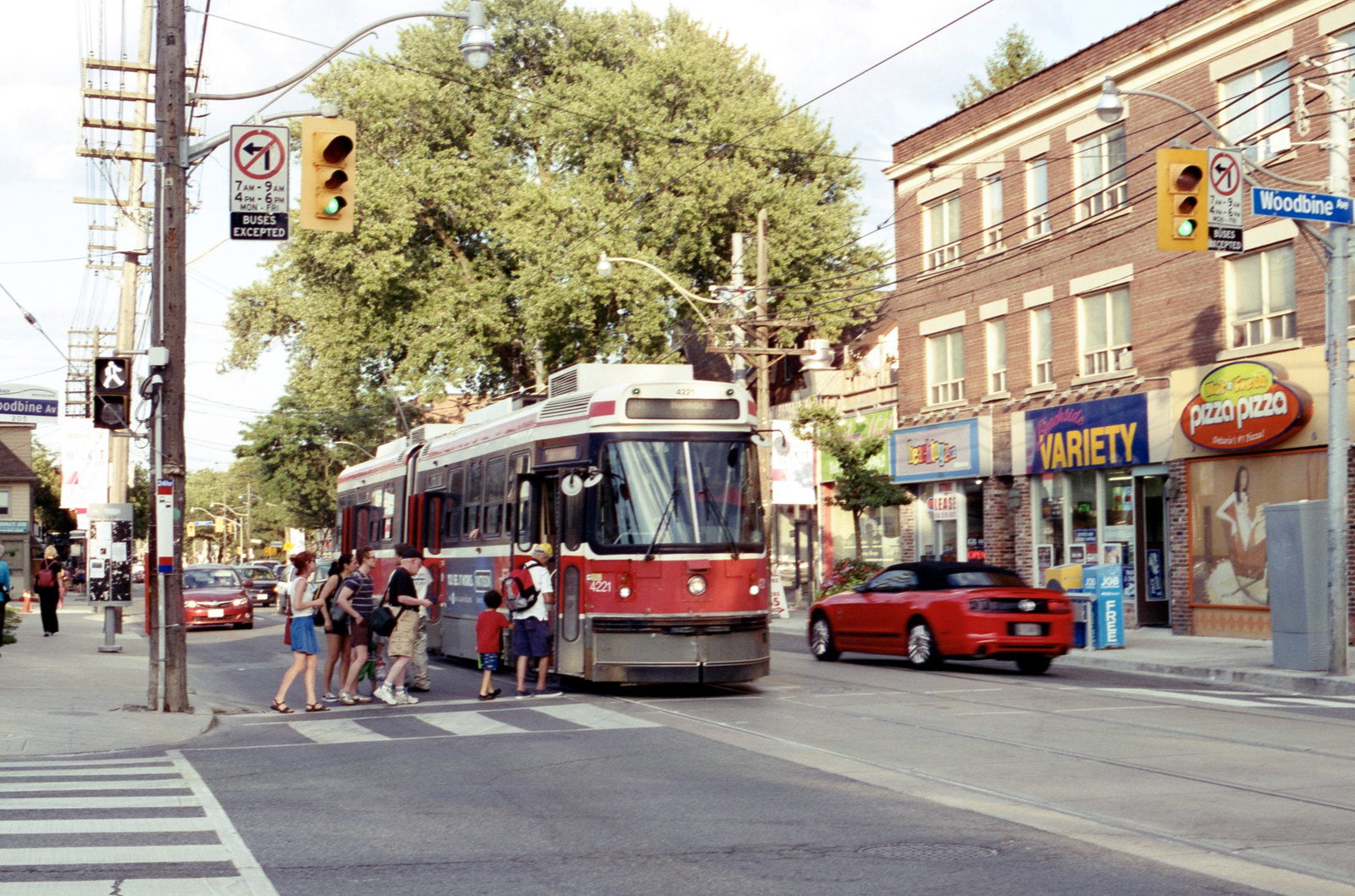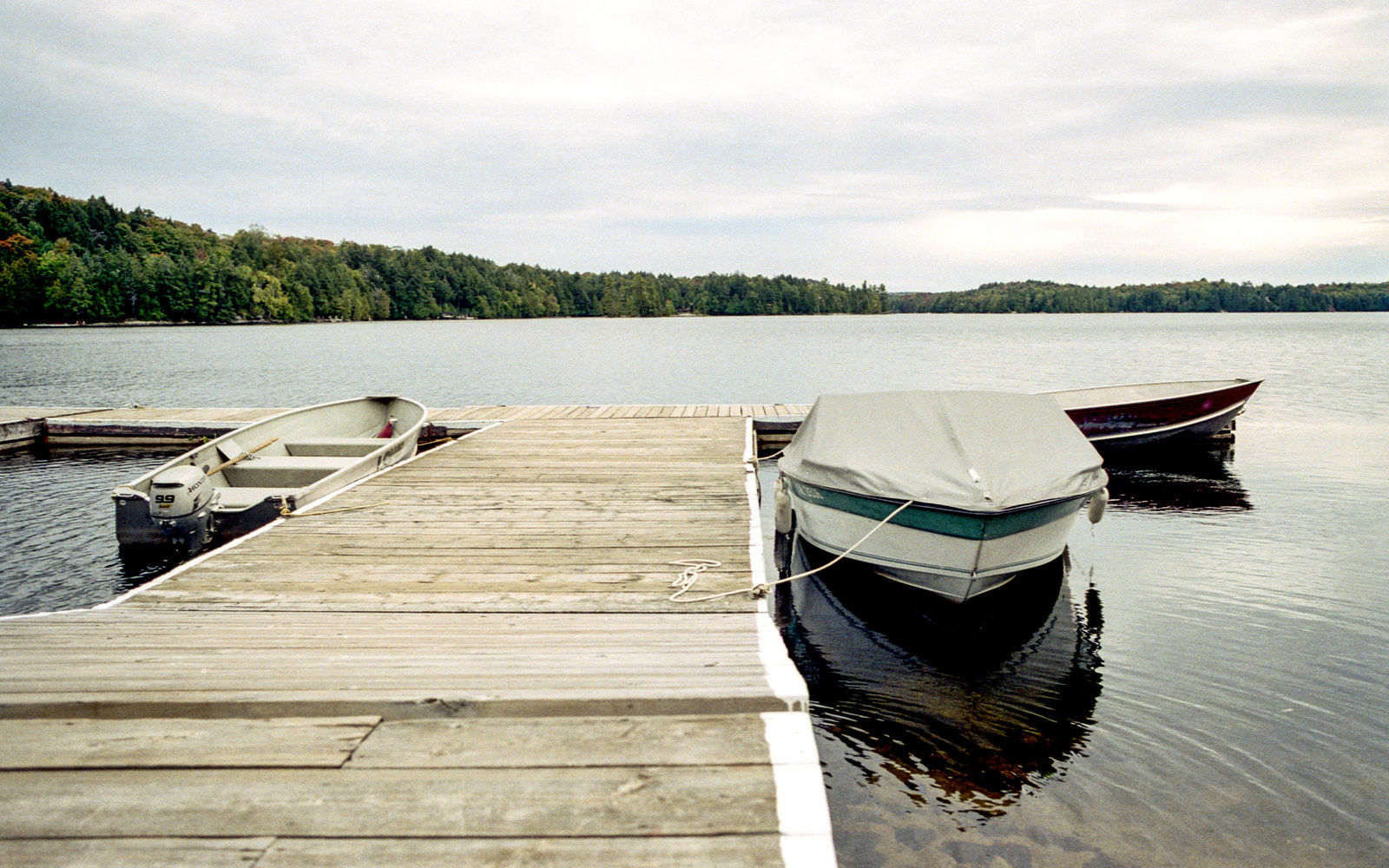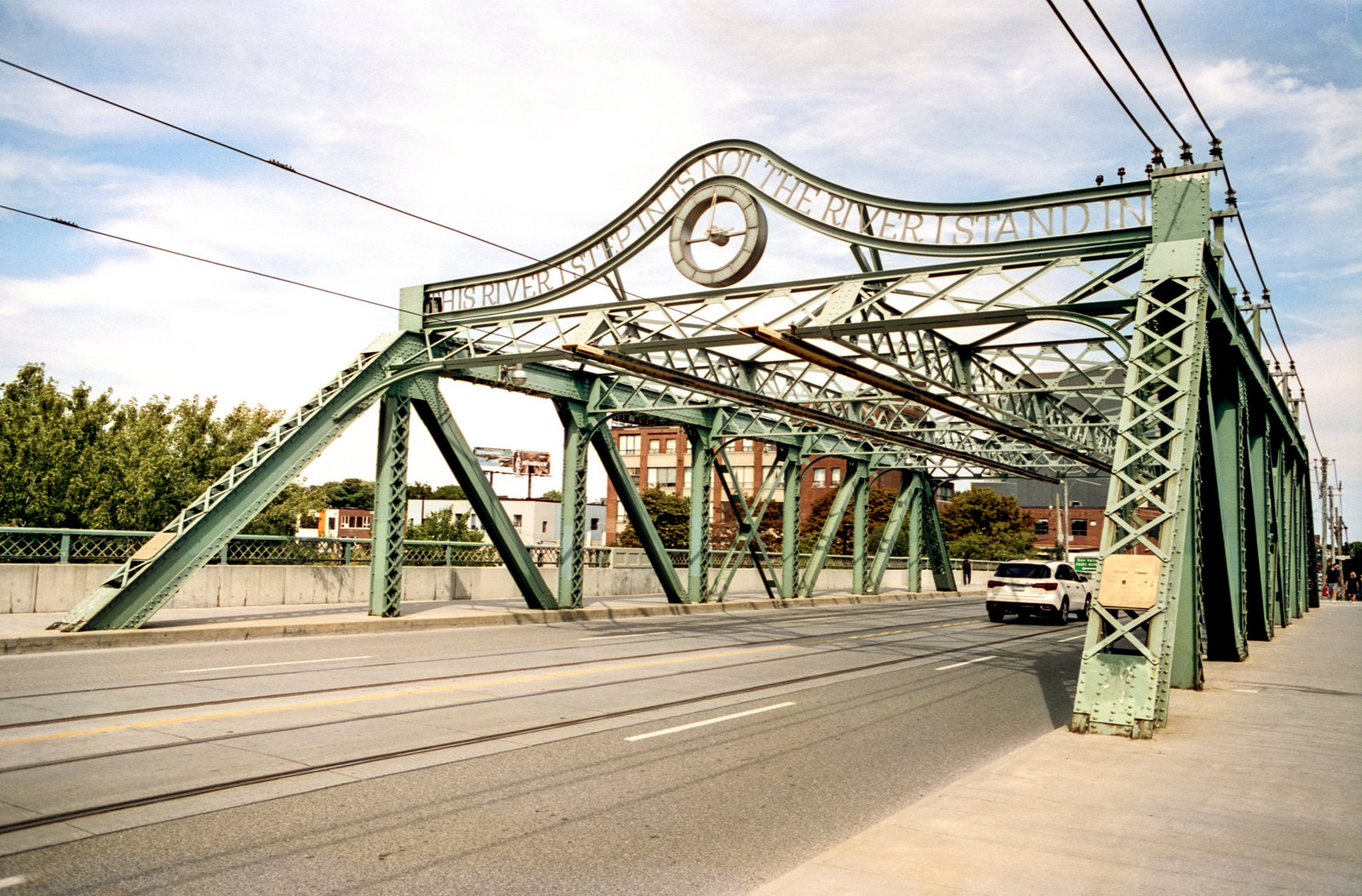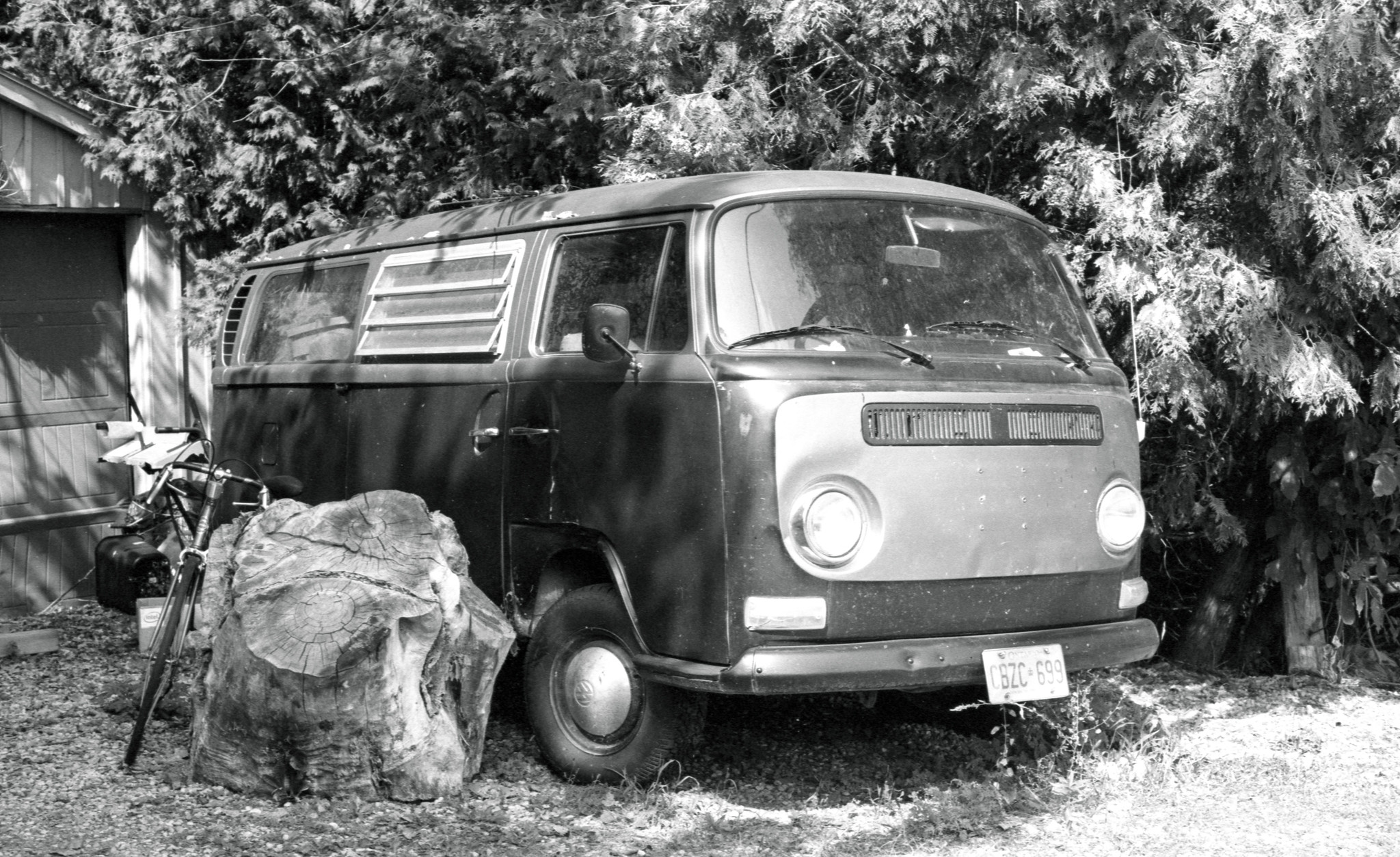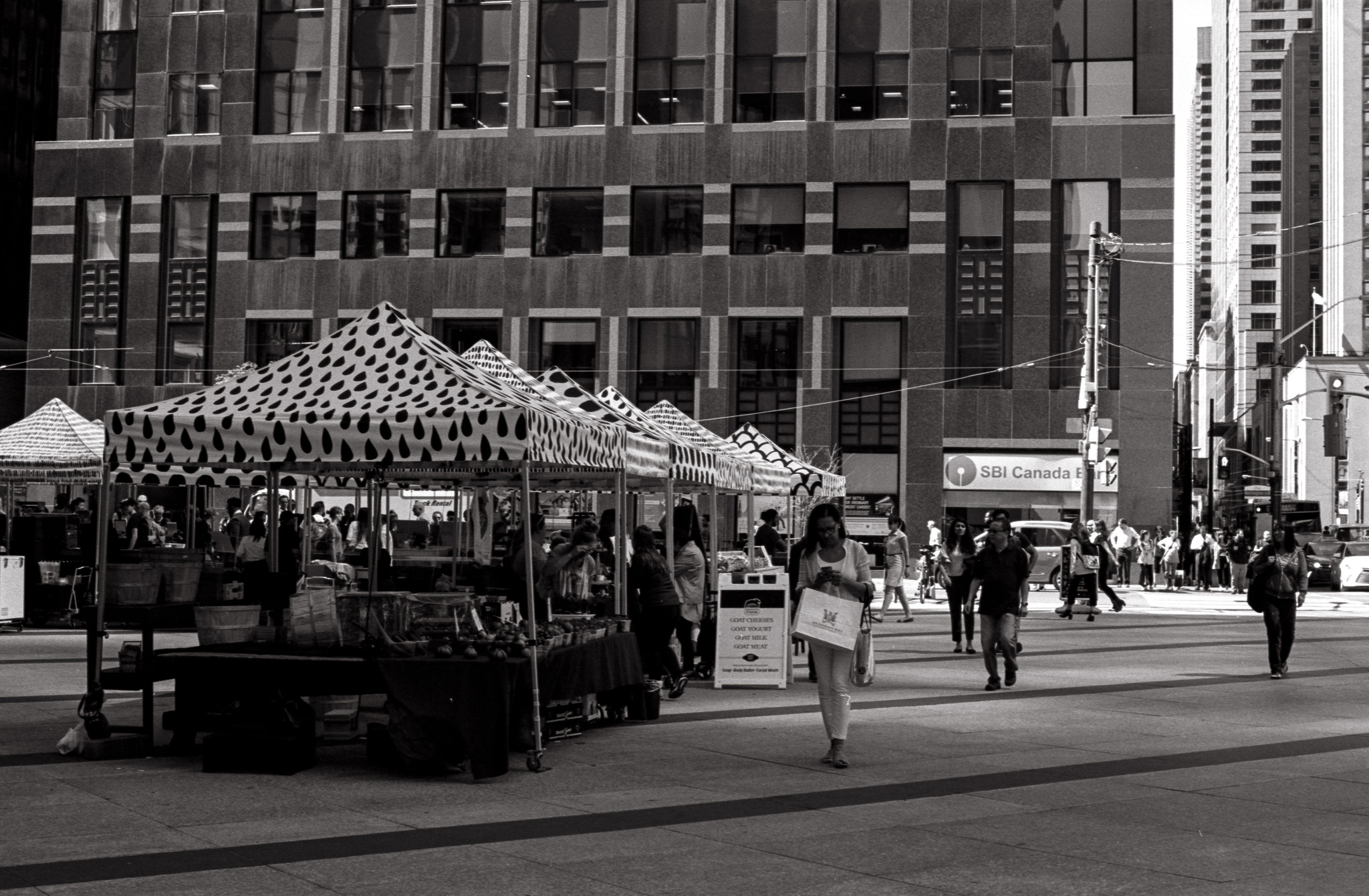If you're a fan of special effect films, then you may be familiar with the brand Dubblefilm. When they were recently looking for product testers, I assumed they wanted people to test a new specialty film. To my surprise, I received an e-mail asking if I was comfortable with minimal-control cameras. My response was an emphatic “Yes!” – my go-to camera is a Holga, after all.
“First of the roll” style self-portrait, double-exposure. AGFA CT Precisa 100, expired 2002, cross-processed
Dubblefilm's new camera is called the SHOW. It's being marketed as an eco-friendly alternative to disposable cameras. Fans of disposable cameras, as well as toy cameras, will find this 35mm camera very familiar. There's one fixed shutter speed (1/125 sec), a fixed aperture (f/8), a wide (32mm) lens, and 1 meter (~3 ft) minimum focusing distance. It also has a built-in flash, powered by a single AAA battery. Accessory-wise, the camera is sold with a neck strap & colorful case.
Woodward Ave, Detroit. Fujicolor C200, expired 2017
“Milk and Froth” ice cream truck. Fujicolor C200, expired 2017
Shot directly into sun for flare. Fujicolor C200, expired 2017
Kodak Color Plus 200
Built-in flash. Kodak Color Plus 200
If you're in the market for a toy camera, you probably also love experimenting with your frames. The camera does not allow for multiple clicks like a Holga: but you can always extract the film tongue after rewinding, and load it back through for double-exposures.
The Heidelberg Project, double-exposure. AGFA CT Precisa 100, expired 2002, cross-processed
If light leaks are your thing, you can quickly open & close the back of the camera (warning: the frame counter will go back to zero, so keep track of where you were. Or don't!).
Light leaked, shot into sun, no flash. Kodak Color Plus 200
Light leaked, shot into sun with flash. Kodak Color Plus 200
I was feeling creative and drew around the edge of the plastic lens with dry-erase markers. This created a subtle vignette/gradient effect.
Roseville theater with green dry-erase marker. Fujicolor C200, expired 2017
Edward Stross by his mural of 13 Nuns who died from COVID-19, with purple dry-erase marker. Fujicolor C200, expired 2017
This camera is a great introduction to toy camera photography. It shines best under brightly-lit conditions (or higher ISO films). Since testing, I've already thrown it in my beach bag alongside my SLR so that I could shoot a second film type without “overthinking” it. If you're not a technical photographer, and prefer experimenting, the SHOW is a great little addition to your camera collection. Did I mention it comes in pink?
Connect
Film photographer Katie Mollon is based in Michigan. See more of her work & connect with her on Instagram.
















